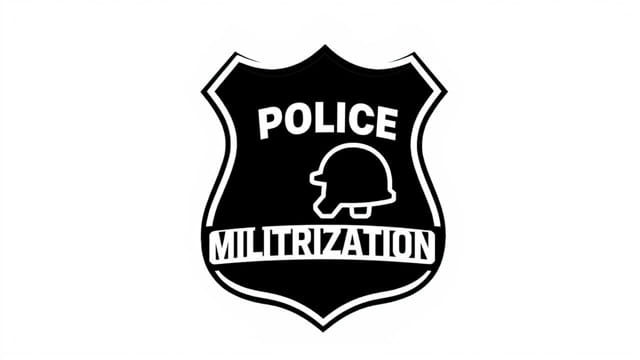When Did Police Militarization Begin
Police militarization did not begin with a single event or date, but rather evolved over decades through a combination of policies, societal fears, crime trends, and federal funding. The gradual transformation of police departments from community-centered patrol forces to militarized entities with access to military-grade weapons and tactics has become a point of debate across the United States. Understanding the timeline and underlying causes behind this shift is critical to analyzing modern law enforcement practices and their impact on civil liberties and public trust.
Early Foundations of Police Militarization
The Rise of Riot Control and Civil Unrest
In the 1960s and 1970s, the United States witnessed significant social and political upheaval. Civil rights protests, anti-war demonstrations, and urban riots became more frequent. In response, police departments began to adopt military-style tactics to control large crowds. Specialized units were formed to respond to unrest, and law enforcement agencies received federal support to increase their capabilities. The idea of using more forceful measures to maintain order started gaining traction during this time.
Birth of the SWAT Concept
One of the earliest signs of police militarization was the formation of the first Special Weapons and Tactics (SWAT) team in Los Angeles in 1967. Created by then-LAPD Inspector Daryl Gates, SWAT teams were designed to respond to high-risk situations such as hostage scenarios and armed standoffs. While initially limited in scope, the SWAT concept spread quickly to other police departments across the country, signaling a shift toward a more militarized approach to policing.
Federal Influence and the War on Drugs
1980s Expansion Under the Reagan Administration
Police militarization accelerated during the 1980s as the federal government declared the War on Drugs. President Ronald Reagan’s administration pushed aggressive anti-drug policies, including the use of paramilitary tactics to fight drug-related crime. During this period, SWAT raids increased dramatically, often targeting low-level offenders. Federal programs began supplying local police with military-grade equipment, a practice that further entrenched the militarized model.
Increased Funding and Equipment Transfers
The Department of Defense and other federal agencies started transferring surplus military equipment to local police departments. Through programs like the 1033 Program, which began in the 1990s, police received armored vehicles, assault rifles, night vision equipment, and other battlefield tools. These resources were often justified as necessary for combating drug cartels and organized crime but quickly became standard tools for routine policing in many communities.
Post-9/11 Era and Homeland Security
Shifting Focus to Terrorism
After the terrorist attacks on September 11, 2001, the militarization of police reached new levels. The federal government significantly increased homeland security funding, much of which went to local law enforcement. Police were trained in counter-terrorism tactics and began conducting joint operations with federal agencies. Surveillance capabilities also expanded, contributing to a more militarized posture in both strategy and appearance.
Normalization of Military Tactics
Police departments began routinely deploying SWAT teams for situations far removed from the original intent, such as executing search warrants or apprehending suspects in nonviolent crimes. This normalization of military-style tactics raised concerns among civil rights groups and the public, especially as the frequency of forceful raids and incidents involving excessive force grew.
Public Reaction and Political Debate
Ferguson and the National Spotlight
The 2014 shooting of Michael Brown in Ferguson, Missouri, and the subsequent protests brought the issue of police militarization into the national spotlight. Images of police in armored vehicles confronting unarmed protesters shocked many Americans and sparked widespread criticism. Lawmakers and civil rights organizations began calling for limits on the transfer of military equipment and reforms to police practices.
Policy Changes and Ongoing Debate
In response to public outcry, the Obama administration implemented some restrictions on the types of military equipment police could receive. However, many of these policies were rolled back under the Trump administration, reigniting debates over the appropriate level of militarization in civilian policing. The conversation continues today, with advocates on both sides presenting arguments for and against maintaining military-style capabilities in local police departments.
Key Features of Police Militarization
- Use of military-grade weapons and gear
- Deployment of SWAT teams for non-emergency situations
- Increased surveillance and intelligence gathering
- Joint operations with federal law enforcement or military
- Training in military tactics and strategies
Implications for Communities
Critics argue that police militarization creates an adversarial relationship between law enforcement and the public. Instead of being viewed as protectors, police may be seen as an occupying force, particularly in marginalized communities. This perception can erode public trust, hinder cooperation, and increase the likelihood of violent encounters. Supporters, however, claim that military tools and tactics are essential for officer safety and handling dangerous situations effectively.
Balancing Public Safety and Civil Liberties
The Need for Oversight and Accountability
One of the central concerns regarding police militarization is the lack of oversight. Many departments receive military equipment without adequate training, policies, or community input. Ensuring transparency in how and when militarized tools are used is essential to prevent abuse and build public confidence. Some jurisdictions have implemented civilian review boards or legislative restrictions to address these concerns.
Exploring Alternatives
Efforts to reverse or reform police militarization often involve promoting community-based policing strategies, investing in mental health services, and emphasizing de-escalation techniques. These approaches aim to reduce reliance on force and foster cooperation between law enforcement and the public. While challenges remain, a growing number of cities and states are reconsidering their approach to law enforcement in response to calls for reform.
The history of police militarization in the United States is complex and shaped by decades of social, political, and economic factors. From the creation of SWAT teams in the 1960s to the post-9/11 security expansion, the gradual shift toward a more militarized police force has sparked widespread debate. Understanding when and why police militarization began is key to informing future policies that balance public safety with civil liberties. As society continues to evolve, so too must the conversation around how we want to be policed and protected.
